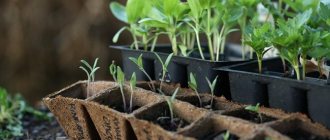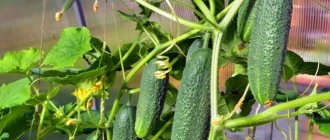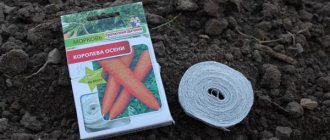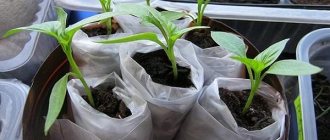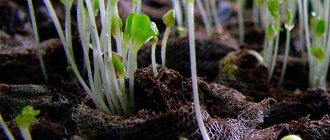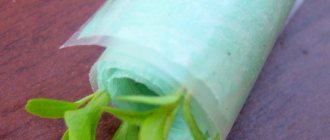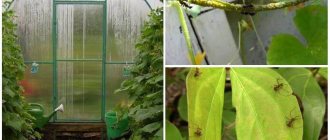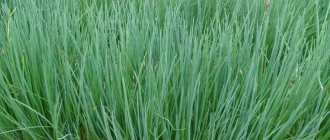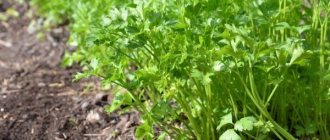Author: Tatyana O. https://floristics.info/ru/index.php?option=com_contact&view=contact&id=16 Category: Garden plants Published: January 04, 2022Last edits: January 04, 2022
- Petunia
January is the month when many summer residents and gardeners begin sowing seedlings of some vegetable plants and flowers, and today I want to remind you of those crops that can be sown in January.
These are mainly plants with slow-germinating seeds or with a long period of development from the moment of germination to flowering or fruiting.
Sowing vegetables
Celery
One such crop is celery root. Celery root seeds are covered with a shell containing essential oils, which inhibits their germination, and the seedlings that finally appear take a very long time to develop. Therefore, this crop should be sown early, and January is the best time for this.
Onion
Another plant that can be sown in January is onions, if you set yourself the goal of growing a full-fledged onion from seeds in one season. Currently, there are many varieties of such onions: Exhibition, Red Baron, Amphora, Karatalsky and many others. Onion seeds take a long time to germinate, and the seedlings develop slowly, and so that the onion has time to grow a good head by the end of summer, one must not delay sowing.
- Mesembryanthemum: growing from seeds and care, types
Another type of onion that can be sown in January is leek. This variety is grown not for the bulb, but for the white part of the stem.
Solanaceae
You can sow late-ripening varieties of eggplants and peppers for seedlings in January. Late varieties of these crops are distinguished by a richer taste and aroma than early ones, but in the central zone, and even more so in the northern regions, late varieties do not have time to ripen sufficiently, and in order to speed up the fruiting of eggplants and peppers, it is necessary to increase the duration of the seedling period with the help of early sowing.
Tomatoes
In addition to late varieties of eggplants and peppers, in January you can also sow late varieties of tall tomatoes, but since tomato seedlings grow quickly, and in insufficient light also become very elongated, for early sowing it is better to use a method with further picking of seedlings in separate containers with a volume of at least 1 liter or the method of growing seedlings in bags, which I already told you about.
What to sow in January? Strawberries!
It is especially worth sowing remontant varieties of strawberries in January. They grow well at home from seeds. And also its relative: the remontant strawberry. When sowing in January, you can count on the fact that in July-August it will be possible to harvest the first harvest.
To grow strawberry seedlings at home, the seeds should be soaked and then slightly dried. Then sprinkle the seeds evenly onto the prepared soil, which consists of a mixture of universal soil and sand in a ratio of 1 to 1.
Here you should carefully consider the container for strawberry seedlings. It should not be deep - the maximum height of the walls is 3 cm. During the first weeks of seedling development, the container should be covered with glass or film.
Place the seedling container as close to the heating radiator as possible. Because successful germination requires a temperature of about 25 degrees Celsius. Five days later, most of the seeds should have sprouted. After 14 days, the first true leaves will appear. This period does not require additional lighting. It is enough to place the seedlings on the windowsill. You can remove the glass during the day, but put it back at night.
When March comes, the strawberries need to be picked, that is, planted in separate containers, the height of which will not be more than 5 cm. During this period, there comes a time when the plants need good lighting. Because the seedlings develop a horse system and leaves.
At the end of April, the culture can be replanted into deeper cups. This will be especially necessary in a situation where cool weather is expected in May. And the transplant will have to take place in June.
When May is warm, seedlings are placed in the garden in the middle or end of the month. To maintain a comfortable temperature, it is recommended to cover the bed with film at night.
Sowing flowers
Petunia
To decorate flower beds, balcony boxes and street flowerpots, as well as for early long-lasting flowering, you can sow some types of annuals, for example, petunia. There are many varieties of this flower of various colors and colors. Varieties of petunias also differ in shape: they can be either miniature with short stems or ampelous, hanging. By skillfully selecting the varieties and varieties of petunias, you can create beautiful compositions that will decorate any garden plot.
Lobelia
Another popular flower among summer residents and gardeners is the annual lobelia. This is a plant with many herbaceous stems, on which up to hundreds of small flowers of different colors can bloom simultaneously. Lobelia, like petunia, can be planted in decorative baskets, flowerpots and boxes. It is also used as a border plant, planted around flower beds with other flowers or along the edges of garden paths. To get flowering lobelia bushes in May, you need to sow this plant as early as possible.
- Planting bulbous flowers in baskets - convenient, practical, fast
Carnation Shabo
In January, you can start sowing Shabot carnation seedlings, which are no less popular in summer cottages and garden plots than petunia and lobelia. Since this plant takes a long time from sowing to flowering, Shabot carnation is one of the first to be sown as seedlings.
Begonia
Ever-flowering begonia is in great demand among lovers of bright flowers, the small seeds of which take a very long time to germinate, and the seedlings develop very slowly. January is the optimal time for sowing begonia seedlings. Ever-blooming begonia looks spectacular not only in a flower bed, but also in large floor flowerpots or hanging boxes and flowerpots. It will decorate your veranda, balcony and any recreation area.
Balsam
The flower collection of many summer residents and gardeners always includes such a classic plant as balsam. There are many types of balsam: annual garden balsam is grown in outdoor flower beds, and Waller's balsam and New Guinea balsam can be grown both in the garden and as a perennial indoor plant.
* * *
These are not all types of vegetable and flower plants that you can start sowing in January. I would like to remind you that in winter it is necessary to create optimal conditions for any seedlings: sufficient lighting, favorable temperature, timely watering and fertilizing. This is the only way you can achieve abundant fruiting of vegetables and early lush flowering of garden flowers.
I congratulate you on the onset of the new sowing season and wish everyone health and successful cultivation of seedlings.
Garden berries: strawberries, wild strawberries
January is the time to sow berries of large-fruited and small-fruited varieties. Strawberry seeds or wild strawberry seeds with large berries have a worse germination rate than small-fruited varieties.
Berry seeds must be stratified. But they are hardened not by negative temperatures, but by low-positive temperatures for 17-22 days.
Note. It will not be possible to get a harvest of remontant strawberries by the end of the season even with early sowing. Only the tops will grow.
Planting ordinary varieties in January will delight you with berries at the end of the summer season. If you sow late, the berries will appear only next summer (in a year).
Planting calendar depending on region
The climate in different regions of our huge country differs in humidity, precipitation and average air temperature. Sowing time depends on the specific area. The calendar of favorable days for sowing presented below was developed taking into account the region of Russia.
| Days in January | Names of plants recommended for sowing | Regions of Russia |
| 9 | Ornamental plants with a long growing season: verbena, snapdragon, gaillardia, delphinium, helenium, Carpathian bell, lobelia, spurge | Southern regions of the country |
| 10; 12; 15 | Lettuce, parsley, spinach, dill, radish, arugula, basil, onion | Southern regions |
| 14 | Celery | Southern regions |
| 19 | Cucumbers, melons, watermelons, tomatoes, bell peppers, lettuce, white cabbage | South of the country |
| 20 | Annual and biennial ornamental plants, tomatoes, bell peppers, eggplants (in a greenhouse) | Warm regions of Russia |
| 23 | Annual and biennial flowers with a long growing season | Central regions, Moscow region |
| 27 | Celery | Regions of central Russia |
| 28 | Beets, carrots, rutabaga (under film) | Southern regions |
Common mistakes
- A sufficient level of illumination of seedlings is not provided. There is very little sunlight in January, so be sure to purchase lamps for additional illumination.
- Sowing is carried out on the waning moon. In order for the seeds to grow better, they must be sown on the waxing moon.
- Plant growing conditions are not met. High humidity, +25, regular watering with warm, settled water - these are the most important points on which the condition of your seedlings depends.
Main advantages
The advantages of sowing seeds for seedlings include the following.
- Plants grown independently turn out to be hardier and stronger compared to ready-made seedlings, which, by the way, may not survive the picking process.
- Flowering time is extended.
- Saving. Ready-made seedlings are much more expensive than a bag of seeds, from which several seedlings will eventually grow.
- The process of plant development from seed to full-fledged seedling is very interesting to observe.
There are many advantages to growing seedlings
Important! It is advisable to plant some types of crops only in the second half of February, since they will be slightly inferior in development to seedlings grown during long daylight hours. Sometimes even the presence of additional lighting cannot affect this.
Some crops are best sown for seedlings in the second half of February
Three difficulties that await you when sowing seedlings of flowers and vegetables in early winter
- Lack of light due to short daylight hours.
- The need to carefully monitor the temperature. Sharp temperature fluctuations can destroy fragile seedlings.
- Increased likelihood of fungal diseases such as blackleg due to the moisture required for normal seed germination and development, combined with fairly cool temperatures.
pepper and tomato seedlings sown in February with additional lighting
Answers to frequently asked questions
What should not be planted as seedlings in January?
Do not sow crops that sprout quickly, as well as early varieties of tomatoes, peppers, cucumbers, etc.
What are the unfavorable days for planting in January 2022?
Do not sow grains on the full moon or new moon. In January 2021, these are the 13th and 28th.
What days will be favorable for sowing seedlings?
In 2022, the second half of January will be successful. Sowing of seeds is carried out during the waxing moon, and in this phase the luminary will be from January 14 to 27.
What can you plant in January?
Greens, legumes, carrots, radishes.
Features of growing plants on a windowsill
To ensure that the seedlings are pleasing to the eye, strong and healthy, you must follow the following rules:
- It is necessary to properly prepare the soil. You can use a specialized one, which is sold in gardening stores, as well as a universal one.
- The seeds are sown in a container with soil, which should be moderately moist.
- Film or glass is placed on top of the soil, so the seeds will be in a fertile environment.
- Place the boxes in a warm place.
- When the first shoots appear, the film (glass) is removed and the container is placed on a windowsill where there is enough light.
- Since the winter day is short, the photoperiod necessary for the growth of seedlings is lengthened by the light of lighting fixtures mounted near (above) the boxes with plants. It is also advisable to use light diffusers, which can be easily made from a mirror or plywood covered with foil. They are installed next to the box with a mirror area facing the window.
- The air in the room should be moderately humid, and the optimal temperature should be 25 degrees Celsius. To create such conditions, you need to cover the batteries with a damp cloth, which will help create the effect of damp heat.
- The seedlings need to be watered with settled water at a comfortable temperature. Cold or too warm water can destroy tender seedlings. The soil should be constantly moist, but not soggy. When watering, you should try not to get water on the delicate leaves; it is better to nourish the plants with moisture using a tray.
When the seedlings come into force, they can be planted in the greenhouse. It is worth noting that plants sown in January begin to bloom early and then bear fruit early, which is convenient for regions where summer is short. Typically, six months pass from the moment the seeds are sown until the first harvest is obtained.
What to consider when buying seeds
The packaging with seeds usually indicates the recommended sowing dates, but sometimes the dates may vary slightly depending on the climatic conditions of a particular region. In addition, summer residents often prefer to collect the seeds of the varieties they like on their own. There are no instructions for garden crops. Therefore, you need to pay attention to some factors when calculating suitable deadlines.
How to buy seeds for seedlings correctly
Key factors to consider when purchasing seeds:
- recommended time for harvesting;
- required air temperature and lighting for plant growth;
- optimal age of seedlings planted in open ground;
- features of the growing season, its duration;
- timing of seed germination.
Information on the seed package
